
Gornji Grad - Medvescak: The Timeless Heart of Zagreb
Discover Gornji Grad - Medvescak, Zagreb's Upper Town, where history, culture, and vibrant urban life converge in a picturesque setting.
Gornji Grad - Medvescak, also known as Zagreb's Upper Town, is a charming blend of history, culture, and vibrant urban life. This picturesque neighbourhood is perched on a hill, offering stunning views of the city below. It's an area where cobblestone streets lead you through centuries-old architecture, historic landmarks, and inviting cafes. The Upper Town is home to some of Zagreb's most iconic attractions. Start your journey at St. Mark's Church, famous for its colorful tiled roof depicting the coat of arms of Croatia, Dalmatia, and Slavonia. Nearby, you'll find the Croatian Parliament and the Banski dvori, the presidential palace. The Lotrščak Tower, dating back to the 13th century, offers panoramic views of the city. Don’t miss the daily firing of the Gric cannon at noon, a tradition that has been marking the time for locals since the 19th century. Wander through the quaint streets and discover hidden gems such as the Museum of Broken Relationships, a unique museum that showcases mementos of past loves. The Upper Town is also known for its thriving arts scene, with numerous galleries and the Croatian Museum of Naïve Art. As you explore, take a moment to relax in one of the many charming cafes and enjoy a cup of coffee while soaking in the historic ambiance. By night, Gornji Grad - Medvescak transforms into a lively area with a variety of restaurants and bars. Whether you are looking for traditional Croatian cuisine or international flavors, you'll find something to satisfy your palate. The neighborhood's nightlife is equally captivating, with many venues offering live music and a festive atmosphere.
Local tips in Gornji Grad - Medvescak
- Wear comfortable shoes; the cobblestone streets can be tricky to navigate.
- Visit the Lotrščak Tower just before noon to witness the Gric cannon firing.
- Check out the Museum of Broken Relationships for a unique and emotional experience.
- Enjoy a coffee at one of the many outdoor cafes and soak in the historic ambiance.
- Explore the area at night for a different perspective and vibrant nightlife.
Gornji Grad - Medvescak: The Timeless Heart of Zagreb
Gornji Grad - Medvescak, also known as Zagreb's Upper Town, is a charming blend of history, culture, and vibrant urban life. This picturesque neighbourhood is perched on a hill, offering stunning views of the city below. It's an area where cobblestone streets lead you through centuries-old architecture, historic landmarks, and inviting cafes. The Upper Town is home to some of Zagreb's most iconic attractions. Start your journey at St. Mark's Church, famous for its colorful tiled roof depicting the coat of arms of Croatia, Dalmatia, and Slavonia. Nearby, you'll find the Croatian Parliament and the Banski dvori, the presidential palace. The Lotrščak Tower, dating back to the 13th century, offers panoramic views of the city. Don’t miss the daily firing of the Gric cannon at noon, a tradition that has been marking the time for locals since the 19th century. Wander through the quaint streets and discover hidden gems such as the Museum of Broken Relationships, a unique museum that showcases mementos of past loves. The Upper Town is also known for its thriving arts scene, with numerous galleries and the Croatian Museum of Naïve Art. As you explore, take a moment to relax in one of the many charming cafes and enjoy a cup of coffee while soaking in the historic ambiance. By night, Gornji Grad - Medvescak transforms into a lively area with a variety of restaurants and bars. Whether you are looking for traditional Croatian cuisine or international flavors, you'll find something to satisfy your palate. The neighborhood's nightlife is equally captivating, with many venues offering live music and a festive atmosphere.
Iconic landmarks you can’t miss
Monument of the Assumption of the Blessed Virgin Mary
Discover the enchanting Monument of the Assumption of the Blessed Virgin Mary, a stunning tribute nestled in the heart of Zagreb, Croatia.
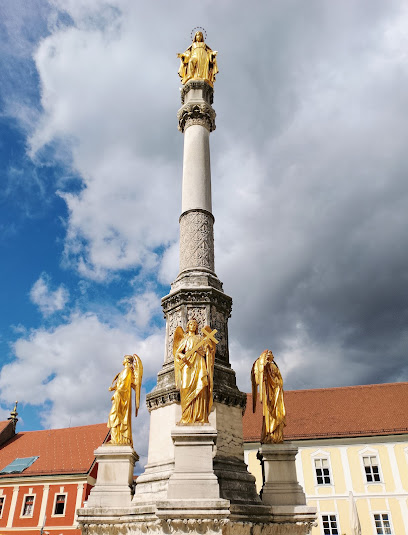
Gornji Grad Zagreb
Explore the historic Gornji Grad in Zagreb, a blend of medieval charm, vibrant culture, and stunning panoramic views.
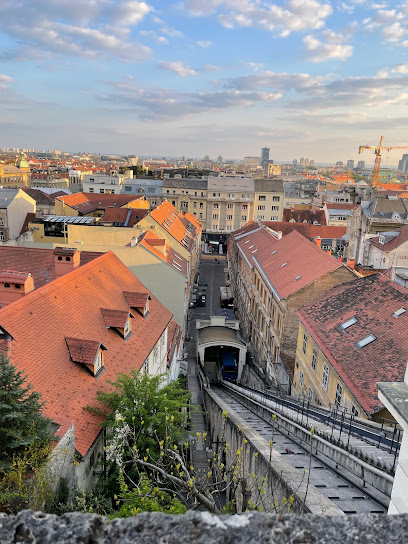
Zakmardi Steps
Explore the stunning Zakmardi Steps in Zagreb - a picturesque staircase connecting history, culture, and breathtaking views of Croatia's capital.
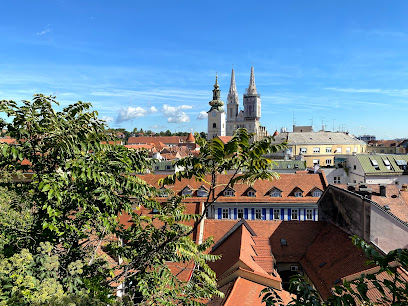
Zagabria
Explore Zagabria in the heart of Zagreb, a captivating tourist attraction blending history, culture, and stunning architecture for an unforgettable experience.
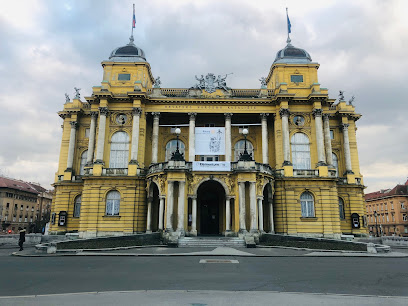
Guía de Zagreb
Explore the enchanting city of Zagreb, where rich history, vibrant culture, and delicious cuisine await every traveler.

Kaptol Street
Explore Kaptol Street, a historical landmark in Zagreb, where rich culture and charming architecture meet in a vibrant atmosphere perfect for tourists.
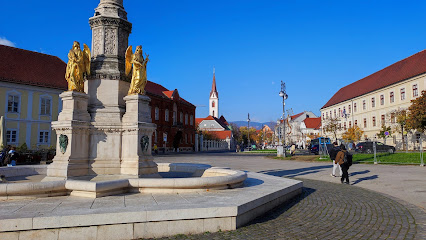
Replika grada Zagreba
Explore the captivating Replika Grada Zagreba, a must-visit attraction showcasing the rich history and architecture of Zagreb.
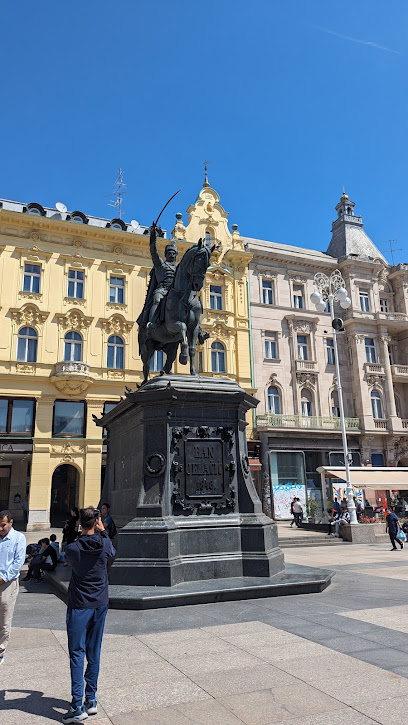
Franjo Marković Square
Explore Franjo Marković Square, a historical landmark in Zagreb, where culture meets charm in a vibrant urban setting.
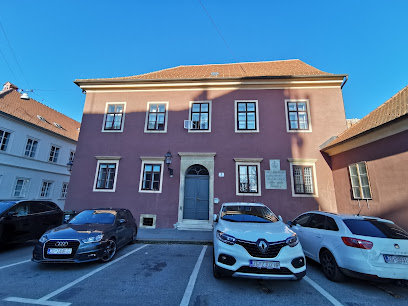
The Small Steps
Explore The Small Steps, a historical landmark in Zagreb showcasing the city's rich heritage and architectural beauty.
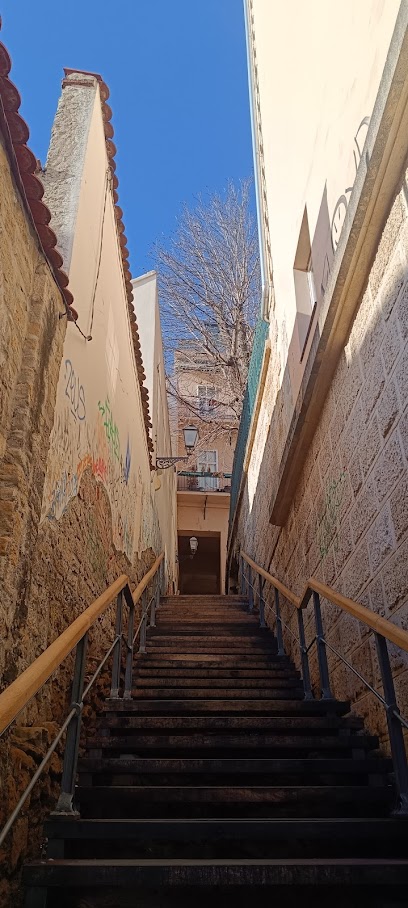
Mala vrata Dverce
Explore the historical charm of Mala vrata Dverce in Zagreb, a gateway to the city's captivating medieval heritage and vibrant local culture.

Unmissable attractions to see
Cathedral of Zagreb
Experience the grandeur of the Cathedral of Zagreb, a Gothic masterpiece and a key historical landmark in Croatia's vibrant capital.
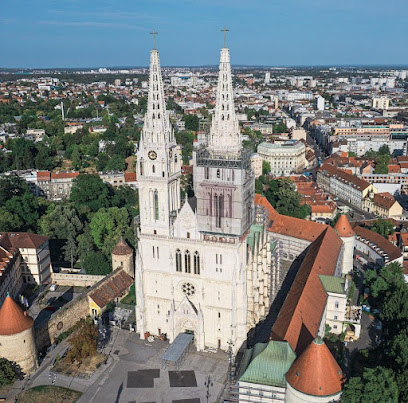
Botanical Garden of the Faculty of Science, University of Zagreb
Explore the tranquil beauty of Zagreb's Botanical Garden, a serene escape filled with diverse plants, educational exhibits, and lush landscapes in the heart of the city.
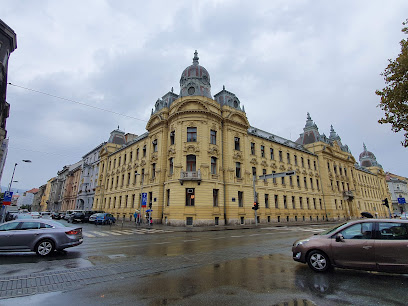
Strossmayer Promenade
Discover the breathtaking views and serene atmosphere of Strossmayer Promenade, a must-visit scenic pathway in Zagreb, Croatia.
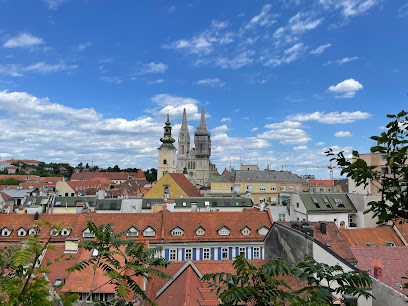
Zakmardi Steps
Explore the enchanting Zakmardi Steps in Zagreb, a vibrant staircase adorned with art, history, and stunning views of Croatia's capital city.
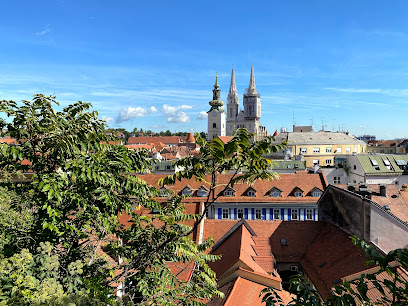
Zagabria
Explore the enchanting charm of Zagabria, a captivating tourist attraction in Zagreb, blending history, culture, and modern vibrancy.
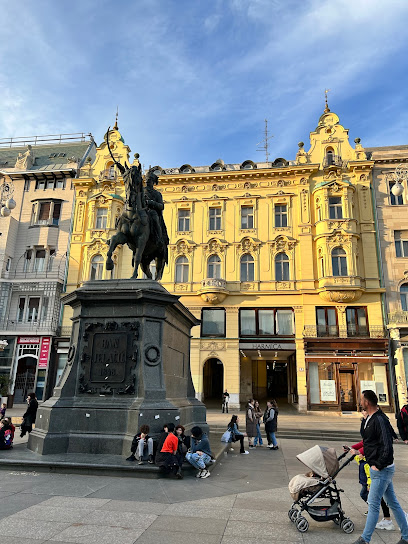
Guía de Zagreb
Explore Zagreb's rich history, vibrant culture, and captivating architecture in Croatia's charming capital city.
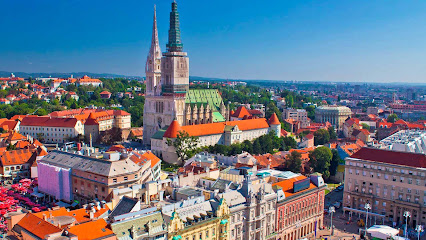
Stube Bartola Felbingera
Experience the authentic flavors of Croatia at Stube Bartola Felbingera, a cozy haven for food lovers in Zagreb's vibrant culinary scene.
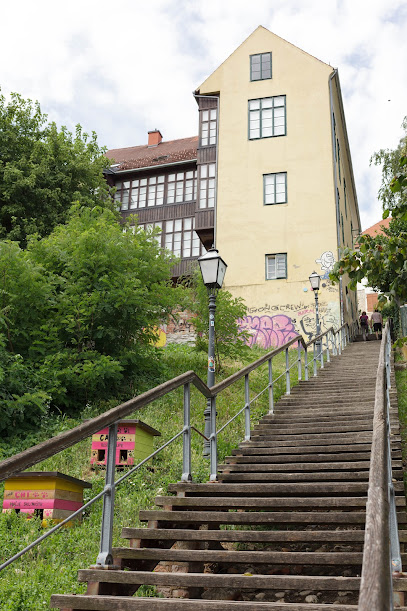
Replika grada Zagreba
Explore the captivating Replica grada Zagreba, where history and artistry converge in the heart of the city, perfect for all tourists seeking cultural enrichment.
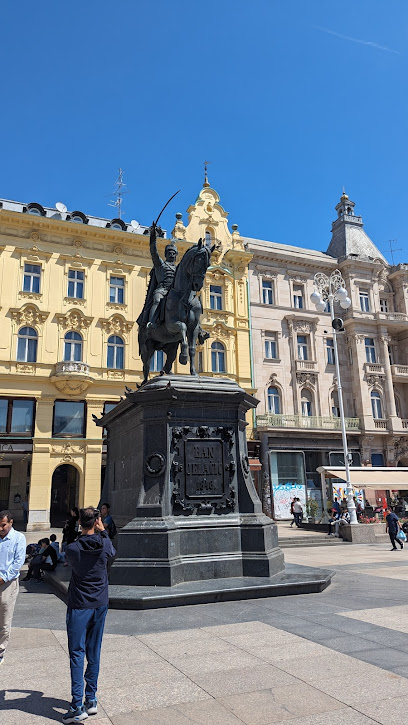
Verzamel Plein
Discover the vibrant atmosphere of Verzamel Plein, the cultural heart of Zagreb, where history meets modernity in a picturesque setting.
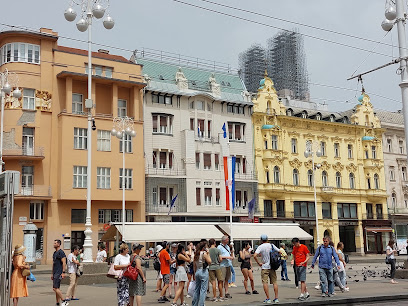
Essential places to dine
Nokturno
Discover authentic European cuisine at Nokturno – where flavorful dishes meet an inviting atmosphere in Zagreb.
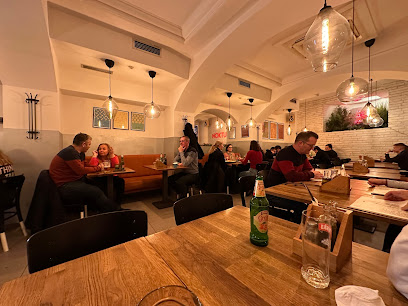
Konoba Didov san
Experience authentic Croatian flavors at Konoba Didov san in Zagreb—where tradition meets taste in every dish.
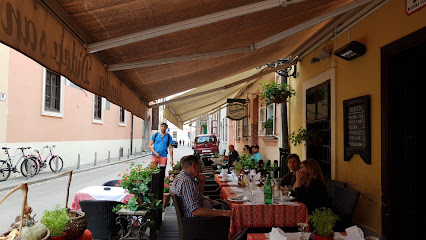
Pod Zidom Bistro
Experience authentic Croatian flavors at Pod Zidom Bistro in Zagreb - a perfect blend of comfort and culinary excellence.
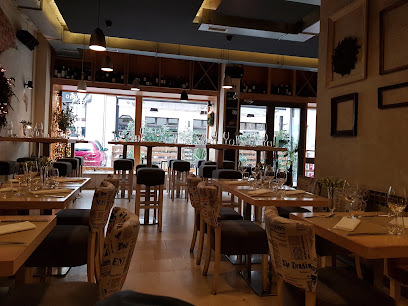
Gostionica Ficlek
Experience authentic Croatian cuisine at Gostionica Ficlek in Zagreb – where tradition meets flavor in every dish.
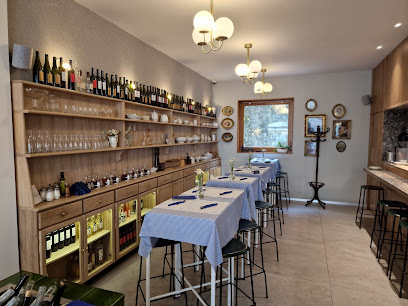
Mio Corazon
Discover Mio Corazon in Zagreb: where vibrant atmosphere meets delicious cuisine and handcrafted cocktails.
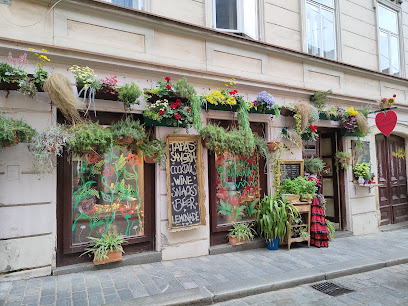
Restaurant Konoba Time4wine Zagreb Gornji Grad (Tradicional food/Sea food/Pasta/Pizza/Grill)
Experience authentic Croatian flavors with traditional dishes and exquisite wines at Restaurant Konoba Time4wine in Zagreb's historic Gornji Grad.
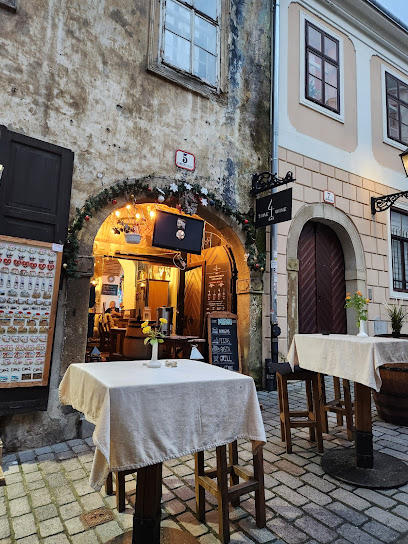
Restoran Uspinjača
Discover Restoran Uspinjača in Zagreb - where traditional Croatian flavors meet modern culinary excellence in a charming atmosphere.
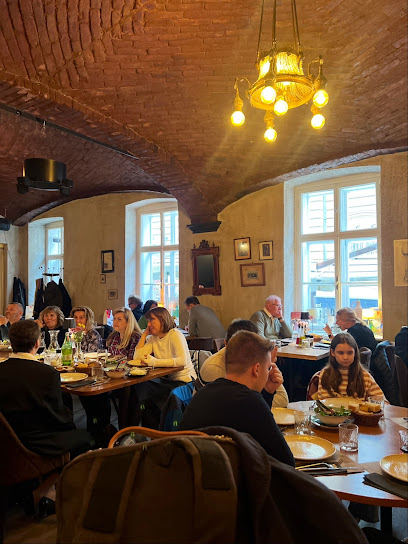
Bistro Vještica
Experience authentic Croatian cuisine at Bistro Vještica in Zagreb, where local flavors meet a cozy atmosphere for an unforgettable dining experience.
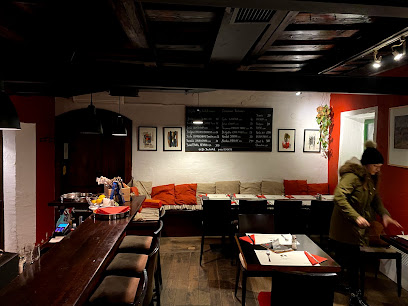
Restaurant All Saints
Experience the culinary delight at Restaurant All Saints - where tradition meets modern cuisine in the heart of Zagreb.
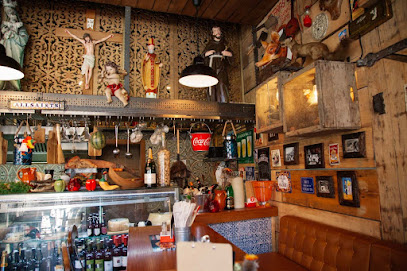
Baska
Discover Baska in Zagreb - where family-friendly dining meets authentic Croatian flavors in a warm and inviting atmosphere.

Markets, malls and hidden boutiques
Ornament
Discover the vibrant spirit of Zagreb at Ornament, where unique textiles and local crafts come together in a captivating shopping experience.
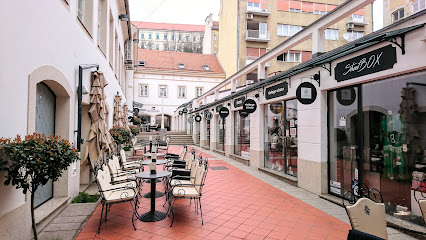
Souvenirs & more ZAGREB
Explore Souvenirs & More Zagreb, your go-to destination for authentic Croatian gifts and unique handcrafted treasures.
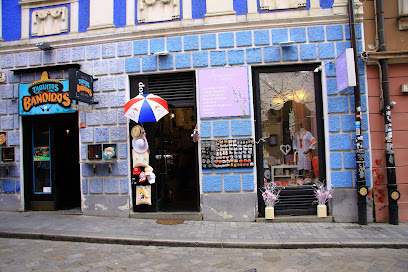
Kredenca Zagreb
Discover the charm of Croatian culture at Kredenca Zagreb, where unique gifts and local delicacies await every traveler.
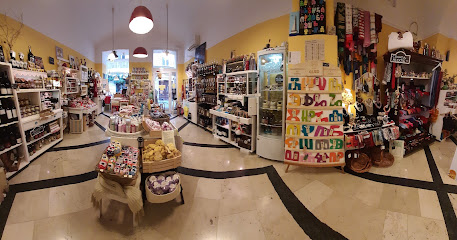
Take Me Home - Croatian Design Shop -
Explore Take Me Home in Zagreb for unique Croatian gifts, handcrafted treasures, and authentic souvenirs that embody the spirit of Croatia.
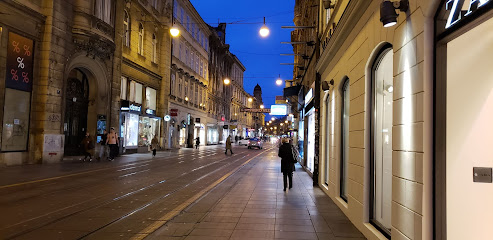
Babushka Boutique
Explore Babushka Boutique in Zagreb for unique gifts, handcrafted treasures, and delightful souvenirs that celebrate Croatian culture.
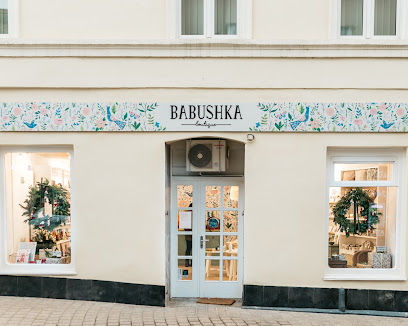
Souvenirs Gric
Discover authentic Croatian souvenirs at Souvenirs Gric in the heart of Zagreb, where every item tells a story of tradition and craftsmanship.
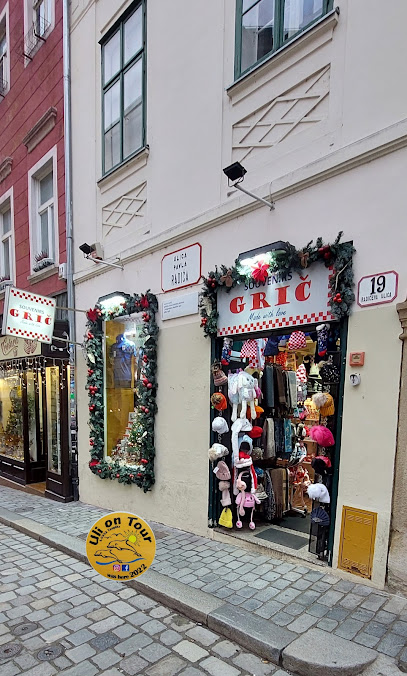
Galería Branimir
Explore Galería Branimir in Zagreb, a charming gift shop brimming with local crafts and unique souvenirs that reflect Croatian culture.
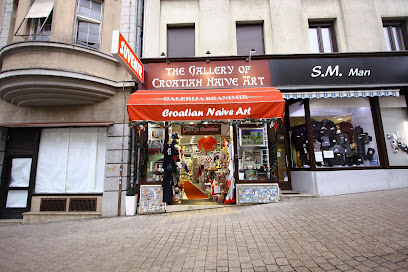
Souvenir Store
Explore the charm of Zagreb through its Souvenir Store, a treasure trove of local crafts and unique gifts that embody Croatian culture.

Style IQ
Experience the essence of Zagreb's fashion scene at Style IQ, a boutique offering unique styles and personalized service in the heart of the city.
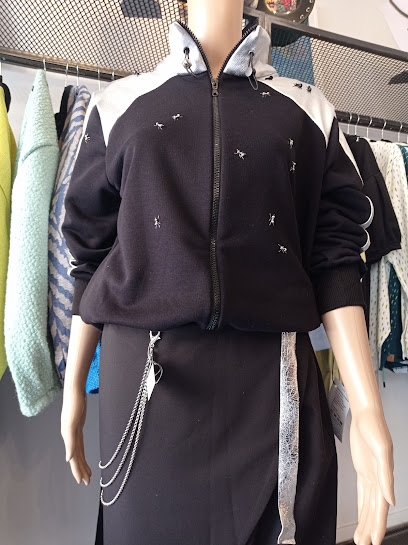
Mašenka
Explore Mašenka in Zagreb for unique gifts and authentic Croatian souvenirs that capture the essence of local craftsmanship.

Šopingholičarka
Discover the unique fashion offerings at Šopingholičarka, a trendy clothing store in Zagreb that captures the essence of local fashion culture.
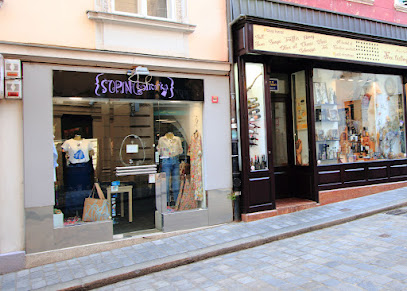
Essential bars & hidden hideouts
Valhalla beer bar
Discover Valhalla Beer Bar in Zagreb, where craft beer meets a vibrant atmosphere, perfect for enthusiasts and casual drinkers alike.
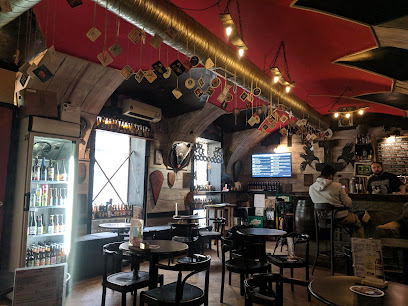
Dezman mini bar
Discover the perfect blend of relaxation and flavor at Dezman Mini Bar, a vibrant bar and bistro in the heart of Zagreb.
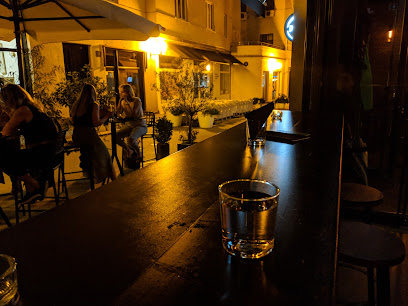
Rock&beer club Alcatraz
Experience the electrifying nightlife of Zagreb at Rock&Beer Club Alcatraz, where live music and cabaret come together for unforgettable evenings.
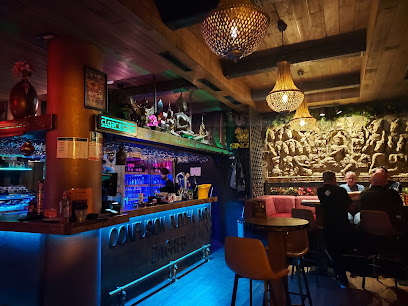
A’e Craft Bar
Discover the vibrant cocktail scene at A’e Craft Bar in Zagreb, where innovative drinks and a charming atmosphere await every visitor.
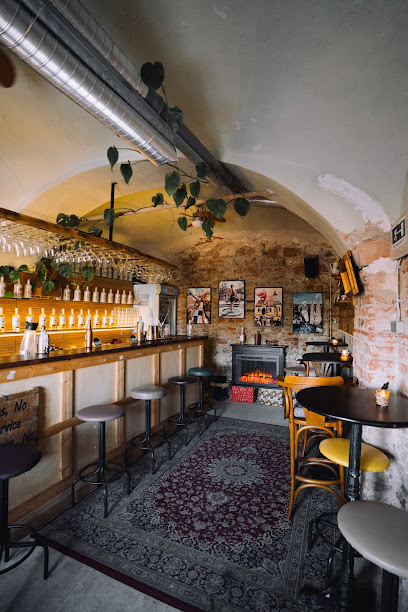
Pivnica Pinta
Experience the best of local brews and a welcoming atmosphere at Pivnica Pinta, Zagreb's beloved pub and beer garden.
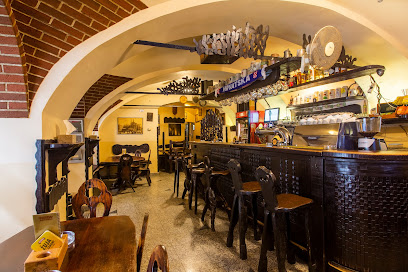
Krolo
Discover Krolo, a vibrant bar in Zagreb, where locals and tourists meet to enjoy a fine selection of drinks and a lively atmosphere.
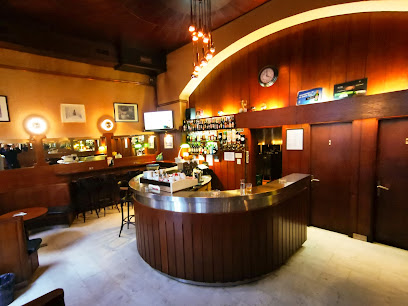
Caffe bar Crni mačak
Experience the vibrant local culture at Caffe Bar Crni Mačak in Zagreb, where great drinks and live music create an unforgettable atmosphere.
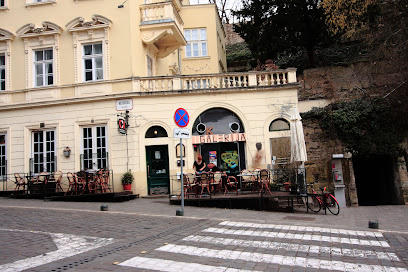
Beer Bar
Experience Zagreb's best beer bar in Gornji Grad, where craft brews and a lively atmosphere come together to create unforgettable memories.
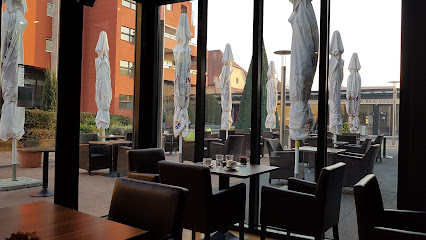
Tava Pub - Bar & Bistro
Discover the charm of Tava Pub in Zagreb, a vibrant bar and bistro with a cozy atmosphere, serving delicious local cuisine and drinks.
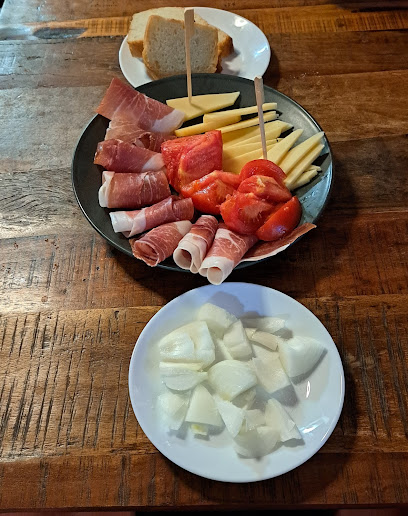
K' Štrossu
Discover K' Štrossu, a charming bar in Zagreb offering stunning views, local drinks, and a perfect atmosphere for unwinding after exploring the city.

Local Phrases
-
- HelloBok
[Bohk] - GoodbyeDoviđenja
[Dov-ee-jen-ya] - YesDa
[Dah] - NoNe
[Neh] - Please/You're welcomeMolim
[Mol-eem] - Thank youHvala
[Hvah-lah] - Excuse me/SorryOprostite
[O-pro-stee-teh] - How are you?Kako si?
[Kah-koh see?] - Fine. And you?Dobro. A ti?
[Doh-bro. Ah tee?] - Do you speak English?Govorite li engleski?
[Go-vo-ree-teh lee eng-les-kee?] - I don't understandNe razumijem
[Neh rah-zoo-mee-yem]
- HelloBok
-
- I'd like to see the menu, pleaseMolio bih jelovnik, molim
[Moh-lee-oh bee yeh-lohv-neek, moh-leem] - I don't eat meatNe jedem meso
[Neh yeh-dem meh-so] - Cheers!Živjeli!
[Zhee-ve-lee] - I would like to pay, pleaseŽelio bih platiti, molim
[Zheh-lee-oh bee pla-tee-tee, moh-leem]
- I'd like to see the menu, pleaseMolio bih jelovnik, molim
-
- Help!Upomoć!
[Oo-poh-mohch!] - Go away!Idi odavde!
[Ee-dee oh-dahv-deh!] - Call the Police!Pozovi policiju!
[Poh-zoh-vee poh-lee-tsee-yoo!] - Call a doctor!Pozovi doktora!
[Poh-zoh-vee dohk-toh-rah!] - I'm lostIzgubljen sam
[Eez-goob-lyen sahm] - I'm illBolestan sam
[Boh-leh-stahn sahm]
- Help!Upomoć!
-
- I'd like to buy...Želim kupiti...
[Zheh-leem koo-pee-tee] - I'm just lookingSamo gledam
[Sah-moh gleh-dahm] - How much is it?Koliko košta?
[Koh-lee-koh kohs-tah?] - That's too expensiveTo je preskupo
[Toh yeh preh-skoo-poh] - Can you lower the price?Možete li spustiti cijenu?
[Moh-zheh-teh lee spoos-tee-tee tsee-yeh-noo?]
- I'd like to buy...Želim kupiti...
-
- What time is it?Koliko je sati?
[Koh-lee-koh yeh sah-tee?] - It's one o'clockJedan je sat
[Yeh-dahn yeh saht] - Half past (10)Pola (deset)
[Poh-lah (deh-set)] - MorningJutro
[Yoo-troh] - AfternoonPopodne
[Poh-pohd-neh] - EveningVečer
[Veh-chair] - YesterdayJučer
[Yoo-chair] - TodayDanas
[Dah-nahs] - TomorrowSutra
[Soo-trah] - 1Jedan
[Yeh-dahn] - 2Dva
[Dvah] - 3Tri
[Tree] - 4Četiri
[Cheh-tee-ree] - 5Pet
[Peh-t] - 6Šest
[Shehst] - 7Sedam
[Seh-dahm] - 8Osam
[Oh-sahm] - 9Devet
[Deh-vet] - 10Deset
[Deh-set]
- What time is it?Koliko je sati?
-
- Where's a/the...?Gdje je...
[Gdyeh yeh] - What's the address?Koja je adresa?
[Koh-yah yeh ah-dreh-sah] - Can you show me (on the map)?Možete li mi pokazati (na karti)?
[Moh-zheh-teh lee mee poh-kah-zah-tee (nah kahr-tee)?] - When's the next (bus)?Kada je sljedeći (autobus)?
[Kah-dah yeh slyeh-deh-chee (ow-toh-boos)?] - A ticket (to ....)Jednu kartu (do ....)
[Yehd-noo kahr-too (doh)]
- Where's a/the...?Gdje je...
History of Gornji Grad - Medvescak
-
Gornji Grad, or Upper Town, is the historical core of Zagreb, with roots tracing back to the medieval period. The area began to develop in the 11th century when the first settlements were established around the fortified settlement of Gradec. This strategic location provided a natural defense against invasions and served as a political and cultural center.
-
Throughout the 13th and 14th centuries, Gornji Grad saw the establishment of numerous churches and monasteries, reflecting the area's growing importance as a religious hub. Notable structures include the St. Mark's Church, with its distinctive tiled roof, which became emblematic of Zagreb. These institutions not only served spiritual needs but also contributed to the cultural and educational development of the region.
-
The 17th and 18th centuries marked a period of Baroque flourishing in Gornji Grad, as evidenced by the construction of grand palaces and public buildings. The area became a center of art and culture, attracting artists, architects, and intellectuals. The influence of the Habsburg Empire facilitated architectural developments, leading to the Baroque style becoming prevalent in the urban landscape.
-
During the 19th century, Gornji Grad played a significant role in the political movements of Croatia. The 1848 revolutions sparked a wave of national consciousness, and Gornji Grad became a focal point for political gatherings and discussions. The Croatian National Theatre, established in 1895, symbolizes the cultural awakening and the push for Croatian identity during this period.
-
The Second World War brought significant turmoil to Gornji Grad, as it did to much of Zagreb. The area witnessed the occupation of Axis forces and the subsequent impact of war on its populace and infrastructure. Post-war reconstruction efforts were initiated to restore the historic buildings and revive the cultural life of Gornji Grad, which was essential for the city's recovery.
-
In recent decades, Gornji Grad has undergone revitalization efforts aimed at preserving its rich history while accommodating modern needs. The neighborhood is now a vibrant tourist destination, showcasing its historical sites, museums, and cultural events. The preservation of Gornji Grad's architectural heritage remains a priority, balancing the old with the new in the heart of Zagreb.
Gornji Grad - Medvescak Essentials
-
Gornji Grad - Medvescak is easily accessible from other neighborhoods in Zagreb. From the main railway station, you can take tram number 6 or 11, which will take you directly to the area. If you're coming from the airport, the Pleso Prijevoz shuttle bus operates regularly to the city center, where you can switch to local trams or buses. Taxis and ride-sharing services are also readily available.
-
Gornji Grad - Medvescak is best explored on foot due to its charming, narrow streets and historical sites. Public transport includes trams and buses, with tram lines 6 and 11 connecting you to various parts of the neighborhood. Bicycles can be rented at various locations, and Zagreb has a dedicated cycling path network that makes exploring the city more accessible.
-
Gornji Grad - Medvescak is generally a safe neighborhood for tourists. However, visitors should remain vigilant against pickpocketing, especially in crowded areas like Tkalčićeva Street. It is advisable to avoid walking alone in poorly lit areas at night. While the neighborhood is safe overall, tourists should exercise caution in isolated parks or areas away from main roads.
-
In case of an emergency, dial 112 for police, fire, or medical assistance. The local hospitals, such as the Clinical Hospital Dubrava, can provide emergency care. It is advisable to carry a copy of your ID and have travel insurance that includes medical coverage. Pharmacies are widely available for non-emergency health needs.
-
Fashion: Do dress appropriately, especially when visiting churches; avoid overly casual attire. Religion: Do respect local customs and be mindful of behavior in religious sites. Public Transport: Do offer your seat to the elderly or disabled; don't engage in loud conversations. Greetings: Do greet locals with a friendly 'Dobar dan'; don't overlook the importance of a polite handshake. Eating & Drinking: Do try local specialties like strukli; don't waste food, as it's considered disrespectful.
-
To experience Gornji Grad - Medvescak like a local, visit the Dolac Market for fresh produce and traditional foods. Enjoy a coffee at one of the many outdoor cafes along Tkalčićeva Street, and take time to explore the picturesque streets and alleyways. For a unique local experience, participate in local festivals or events, which often showcase Croatian culture and cuisine. Don’t miss the views from the Lotrščak Tower, especially at noon when the cannon fires.
Nearby Cities to Gornji Grad - Medvescak
-
Things To Do in Rogaška Slatina
-
Things To Do in Ptuj
-
Things To Do in Celje
-
Things To Do in Maribor
-
Things To Do in Velenje
-
Things To Do in Bihac
-
Things To Do in Kamnik
-
Things To Do in Ljubljana
-
Things To Do in Zalaegerszeg
-
Things To Do in Škofja Loka
-
Things To Do in Postojna
-
Things To Do in Opatija
-
Things To Do in Keszthely
-
Things To Do in Graz
-
Things To Do in Banja Luka













